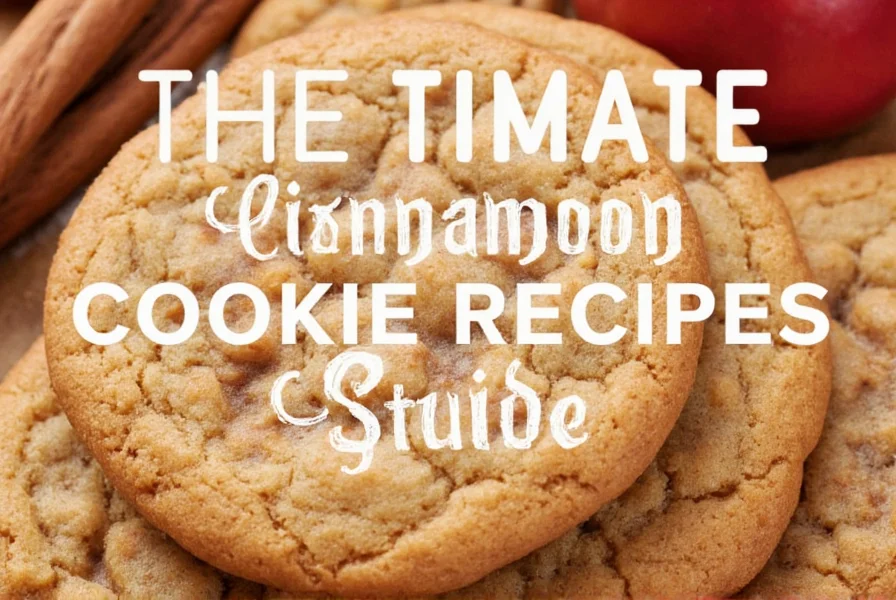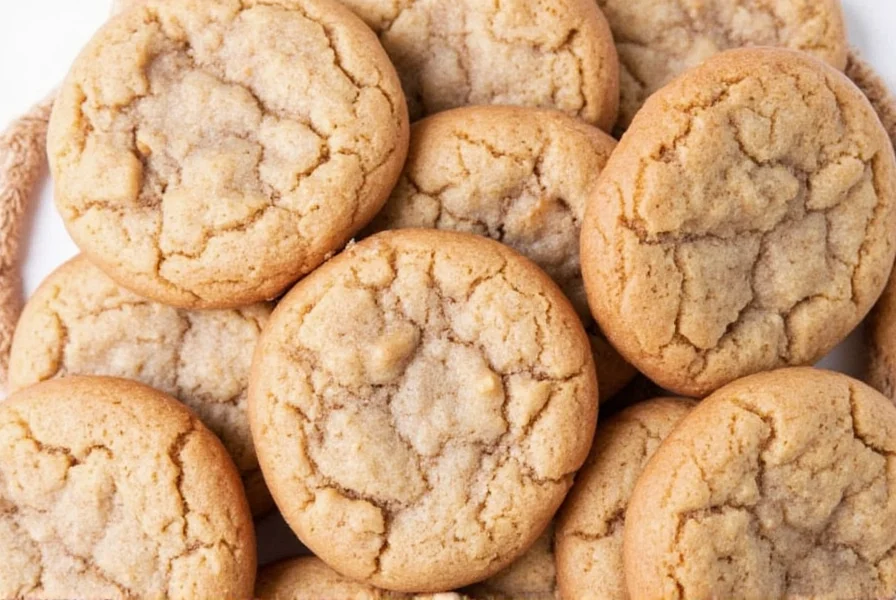The Science Behind Perfect Cinnamon Cookies
Cinnamon's complex flavor profile—sweet, woody, and slightly peppery—complements butter and sugar exceptionally well in cookie recipes. The key to exceptional cinnamon cookies lies in understanding how this spice interacts with other ingredients. Cinnamon contains cinnamaldehyde, which enhances perceived sweetness, allowing you to potentially reduce sugar by 10-15% while maintaining the same sweet perception.
When baking with cinnamon, always use fresh spice for maximum flavor impact. Ground cinnamon loses potency after 6-12 months, so check your spice cabinet before starting. For the most aromatic results, combine both Ceylon ("true" cinnamon) for delicate flavor and Cassia (common grocery store cinnamon) for stronger punch in a 1:1 ratio.
Essential Ingredients and Their Roles
Understanding each ingredient's function helps you troubleshoot and adapt recipes successfully:
| Ingredient | Function in Cinnamon Cookies | Substitution Options |
|---|---|---|
| Butter (unsalted) | Creates tender texture and carries cinnamon flavor | High-quality margarine (not recommended for best results) |
| Brown sugar | Provides moisture for chewiness and caramel notes | White sugar (reduces chewiness) |
| White sugar | Promotes spreading and crisp edges | Coconut sugar (alters flavor profile) |
| All-purpose flour | Provides structure | Gluten-free 1:1 blend (may require xanthan gum) |
| Cinnamon | Main flavor component | Apple pie spice (milder, more complex) |
Three Tested Cinnamon Cookie Variations
Classic Chewy Cinnamon Cookies
This best cinnamon cookie recipe delivers soft centers with slightly crisp edges. The secret? An extra egg yolk and increased brown sugar ratio.

Crisp Cinnamon Wafers
For those who prefer thin, delicate cookies that melt in your mouth, this variation reduces moisture content while maximizing cinnamon flavor. Roll the dough thinner (⅛ inch) and bake until golden at the edges.
Cinnamon Sugar Crinkle Cookies
These festive cookies combine the best of chocolate and cinnamon. The crackled surface comes from rolling dough balls in cinnamon-sugar before baking, creating a beautiful textured finish with intensified spice flavor.
Professional Baking Tips for Perfect Results
Follow these cinnamon cookie baking tips to avoid common pitfalls:
- Chill your dough for at least 2 hours (or up to 72 hours) to prevent excessive spreading and concentrate flavors
- Mix cinnamon with dry ingredients first to ensure even distribution without overmixing
- Use a cookie scoop for uniform sizing, which ensures even baking
- Bake on light-colored baking sheets—dark sheets can cause bottoms to burn before tops set
- Remove cookies from baking sheets after 2 minutes to prevent carryover cooking
Troubleshooting Common Issues
Problem: Cookies spread too much
Solution: Chill dough longer, reduce sugar slightly, or add 1-2 tablespoons additional flour
Problem: Cinnamon flavor isn't pronounced
Solution: Use fresher cinnamon, increase amount by ¼ teaspoon, or add ⅛ teaspoon cinnamon extract
Problem: Cookies are too dry/crumbly
Solution: Increase brown sugar ratio or add 1-2 teaspoons milk or cream to dough
Storage and Serving Recommendations
Store cooled homemade cinnamon cookies from scratch in an airtight container at room temperature for up to 5 days. For longer storage, freeze cookies between layers of parchment paper for up to 3 months. Thaw at room temperature for 30 minutes before serving.
Enhance your cinnamon sugar cookie variations by serving with:
- Vanilla ice cream for à la mode perfection
- Strong coffee or chai tea to complement the spice
- Apple butter for a complementary fall flavor pairing
What's the best cinnamon to use in cookie recipes?
Ceylon cinnamon offers a more delicate, complex flavor ideal for subtle cookies, while Cassia (common grocery store cinnamon) provides stronger, spicier notes. For the best results, use a 1:1 blend of both types to achieve balanced flavor complexity in your cinnamon cookie recipe with butter.
Why did my cinnamon cookies turn out cakey instead of chewy?
Cakey texture usually results from too much flour (measured incorrectly), excessive leavening agents, or overmixing the dough. For chewier cinnamon cookies, measure flour by weight (125g per cup), reduce baking powder to ½ teaspoon, and mix just until ingredients are incorporated.
Can I make cinnamon cookies without creaming the butter and sugar?
While creaming incorporates air for texture, you can make acceptable cinnamon cookies by melting the butter first. However, this produces flatter, crispier cookies. For the best texture in your how to make soft cinnamon cookies recipe, proper creaming (2-3 minutes until light and fluffy) is essential for optimal rise and chewiness.
How do I prevent my cinnamon cookies from tasting bitter?
Bitterness in cinnamon cookies typically comes from expired baking soda/powder or too much cinnamon. Always use fresh leaveners (replace every 6 months) and limit cinnamon to 1½-2 teaspoons per cup of flour. If using dark brown sugar, reduce to light brown sugar as the molasses can intensify bitterness with cinnamon.
What's the ideal baking temperature for cinnamon cookies?
350°F (175°C) is the ideal temperature for most cinnamon cookie recipes. This allows proper spreading and browning without burning the delicate cinnamon sugars. For thicker cookies, reduce to 325°F (160°C) and increase baking time by 2-3 minutes to ensure centers set properly without over-browning edges.











 浙公网安备
33010002000092号
浙公网安备
33010002000092号 浙B2-20120091-4
浙B2-20120091-4